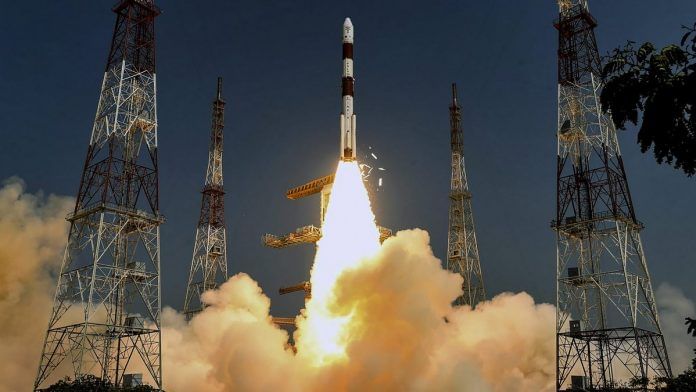Bengaluru: In the Indian Space Research Organisation (ISRO)’s successful PSLV-C45 launch Monday, apart from the main payload, India’s electronic spy satellite called EMISAT, there were 28 other foreign payloads that were a mix of instruments from countries like the US and Lithuania.
All the guest satellites that went into orbit were CubeSats — small satellites built to fit a certain set of template specifications so that cost, fit and deployment don’t need customisation and can be standardised in a rocket.
CubeSats are becoming increasingly popular these days, with over 2,000 of them currently in orbit. They come in units. The base unit (1U) is a cube that is 10 cm x 10 cm x 10 cm. Other CubeSats are multiples of this dimension. Such dimensions enable the CubeSats to fit easier in rockets which don’t need to choose custom payloads for better integration with each other in the small space inside the craft.
As ISRO successfully completed the significant launch for India, ThePrint takes a look at the other 28 foreign satellites aboard the PSLV-C45 and their utility.
Also read: There’s a mysterious Indian spy aboard the PSLV that ISRO just launched into space
20: American Flock-4a Doves
In Monday’s launch, the largest number of satellites belonged to the US private company, Planet Labs. Twenty of the 28 customer satellites were 3U CubeSats, called Flock-4a satellites. Each individual satellite is called a Dove and carries imaging equipment that can take pictures at a resolution of 3 meters.
Planet Labs’ Doves are low cost satellites designed to live for a short period of time and provide function to the US military, among other clients. The large number of Doves in orbit enables the same location to be imaged multiple times a day, greatly aiding real-time monitoring of an area.
4: American Lemur-2
Another US company, Spire Global, sent up four of their 3U CubeSats called Lemur-2 satellites. These commercial satellites form a ‘constellation’, or an orbiting group of satellites, used for remote sensing. They provide ship tracking and weather monitoring services.
The 4.6kg Lemur-2 satellites are known for their two primary instruments: The STRATOS instrument uses GPS readings to determine temperature, pressure, and humidity in Earth’s atmosphere, while the SENSE instrument tracks sea vessels, and can receive their identification, position, course, and speed.
2: Lithuanian BlueWalker1 and M6P
NanoAvionics, the Lithuanian subsidiary of the American AST&Science, had two 6U CubeSats launched, each with dimensions of 10cm x 20 cm x 30 cm. Both are based on the company’s new platform design called M6P, and are demonstrators to show the design off for future clients.
The M6P is a versatile platform and its performance is optimised for various uses such as internet of things (IoT), for which these two satellites will be used. The M6P and BlueWalker1 satellites will be the first to test the platform in orbit, demonstrating their control, propulsion, and communication systems.
1: Swiss Astrocast 0.2
This 3U satellite will also be used to test IoT and communication. The Swiss company, Astrocast SA, launched a previous satellite in December called Astrocast 0.1. The two satellites will work together as a part of a mini, incomplete constellation. Operators and ground stations will primarily test communication between the two satellites in the form of transmitted radio signals.
1: Spain’s AISTECHSAT-3
The Barcelona-based Aistech Space sent a 2U CubeSat called Danu Pathfinder or AISTECHSAT-3. It is a part of the future Danu constellation and will be used to track ships and airplanes.
Also read: Anti-satellite missile capability crucial step in space: ex-ISRO chief Kasturirangan






